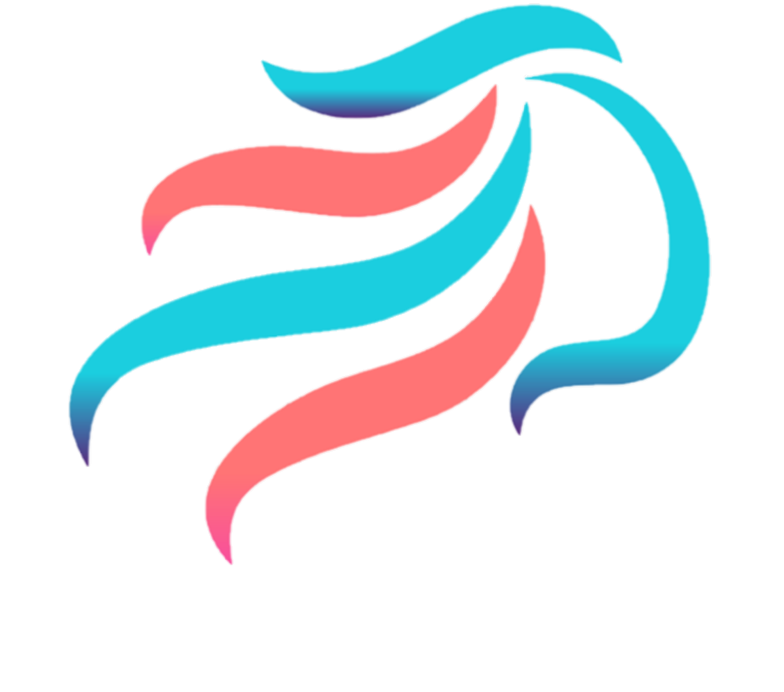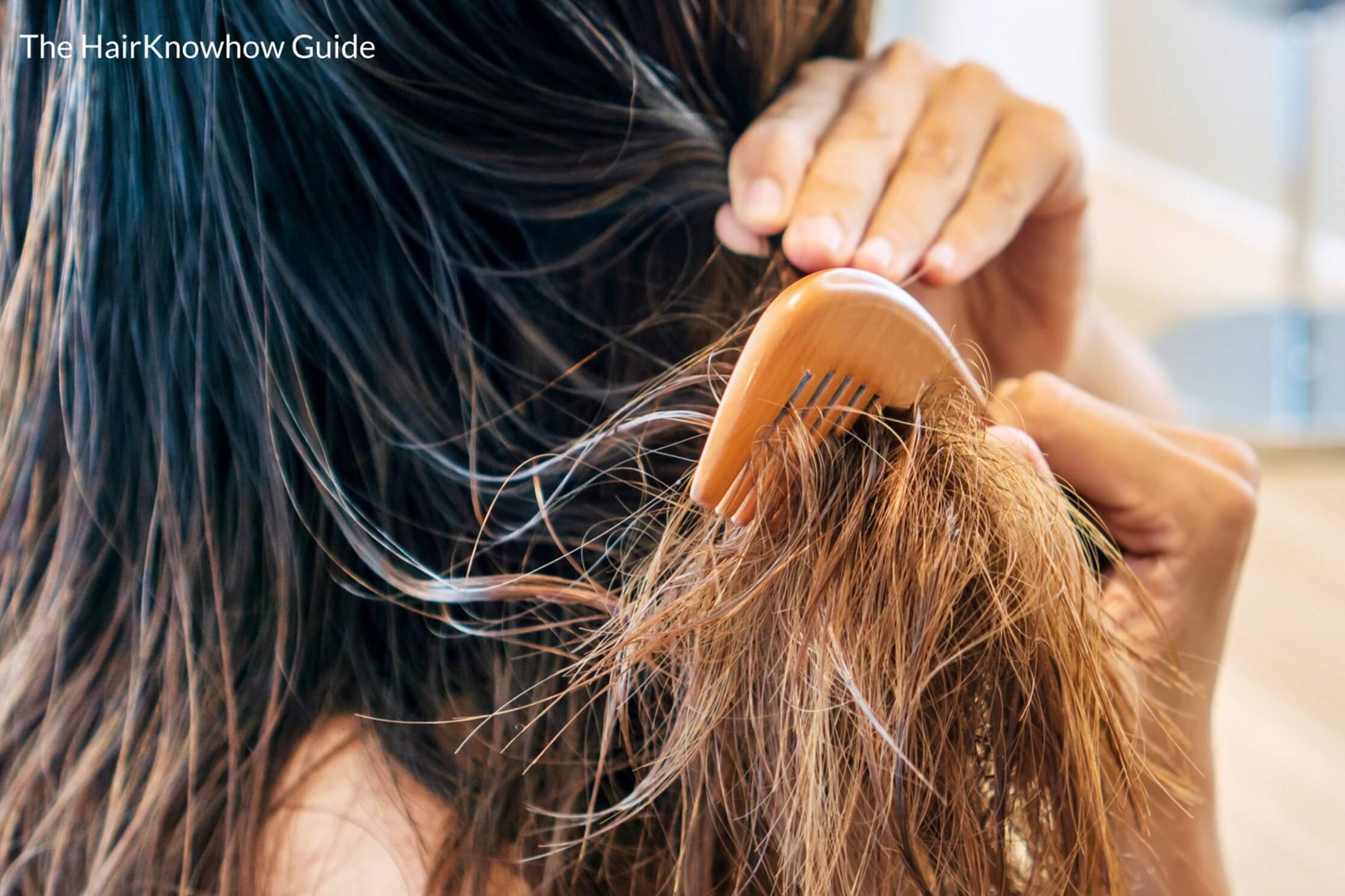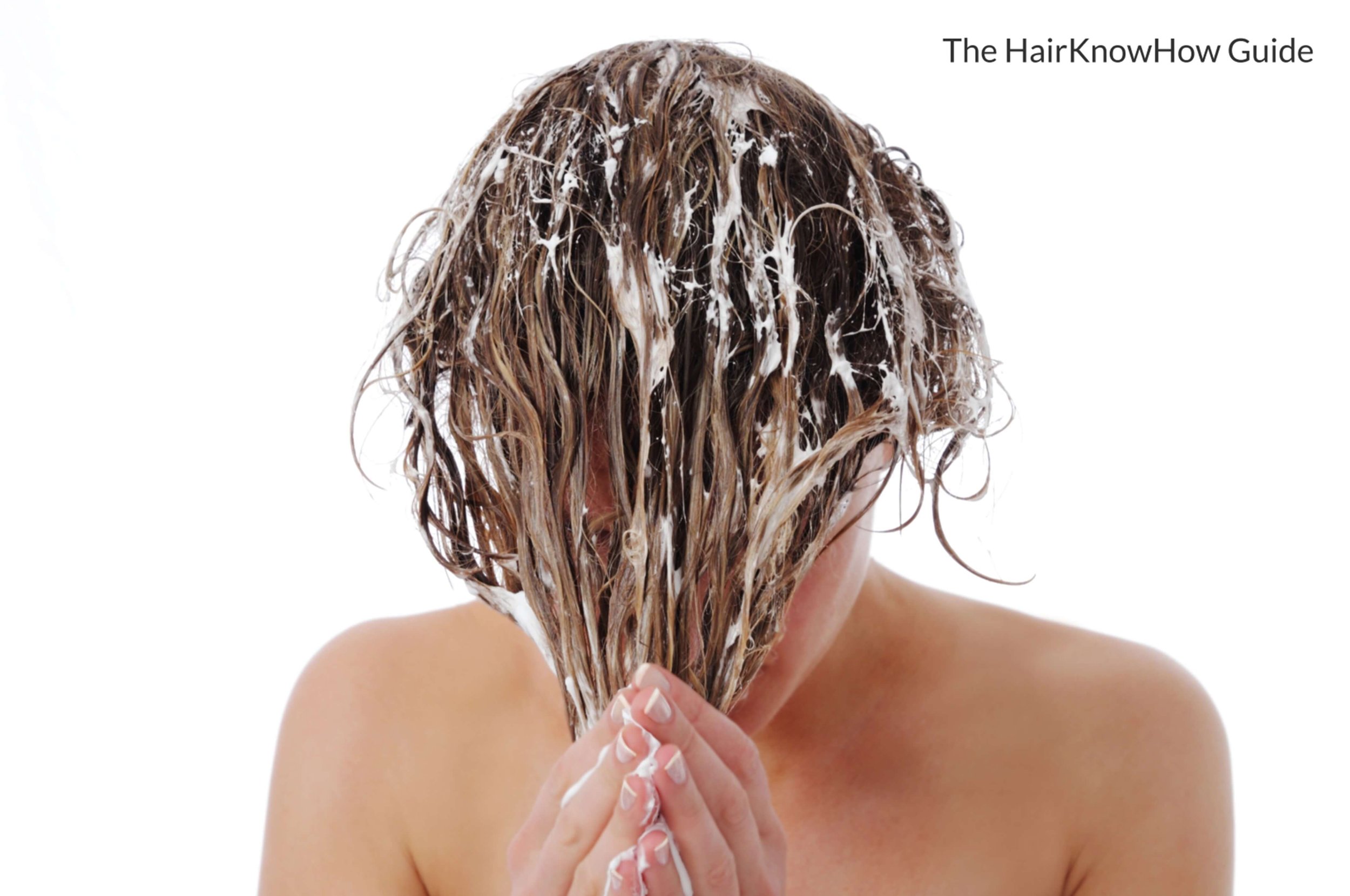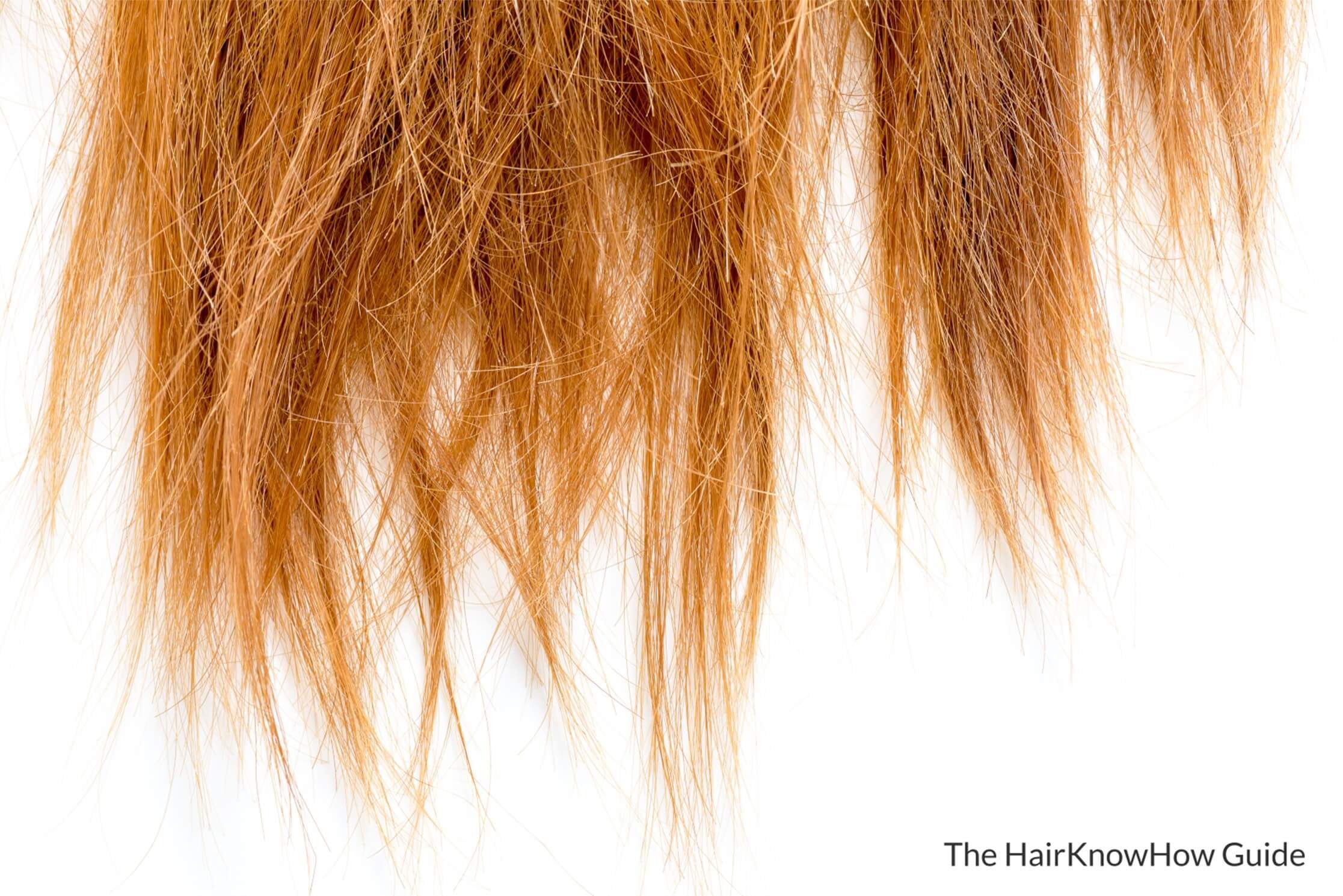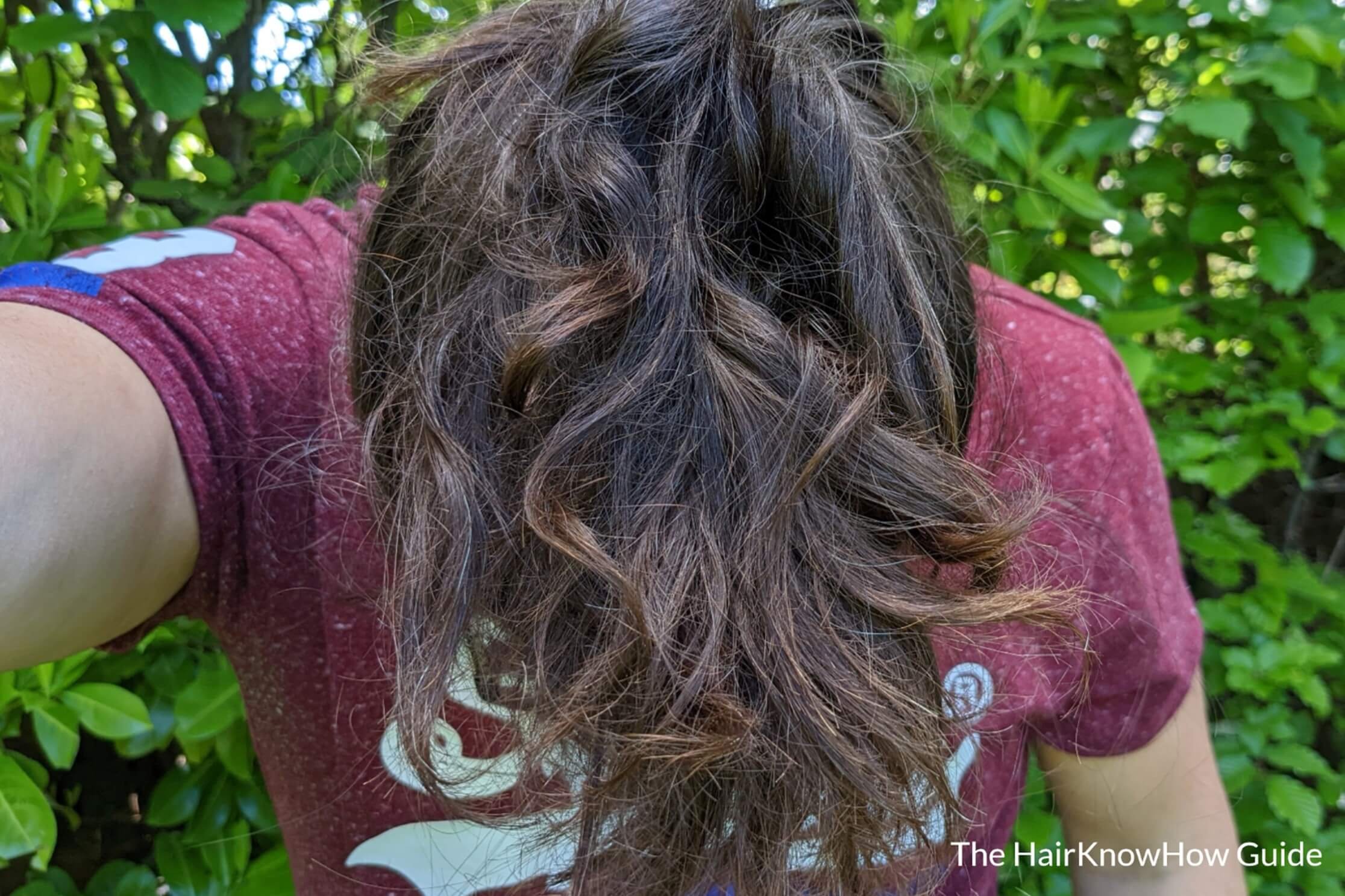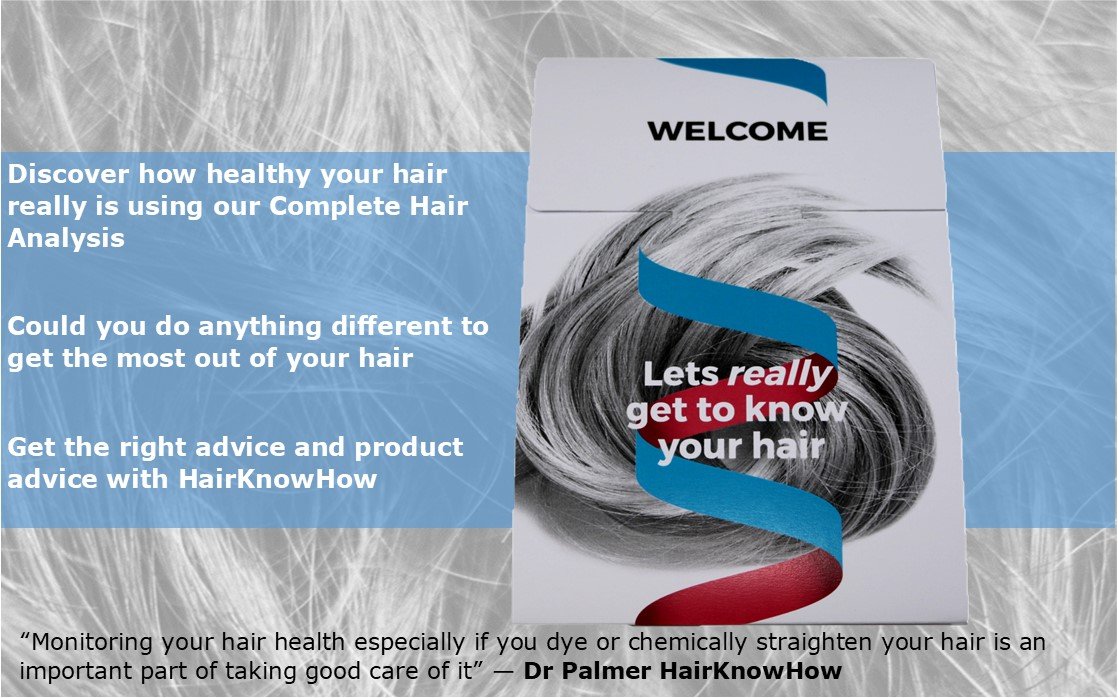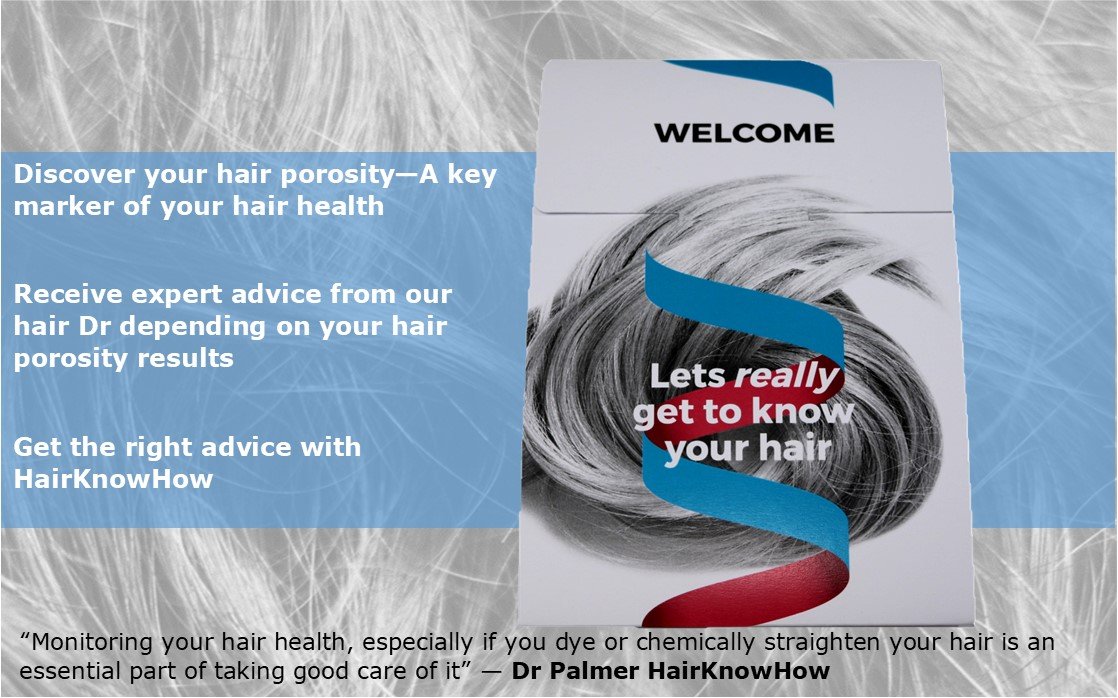Updated October 2022 By Dr Jonathan Palmer
Frizzy Hair The Ultimate Guide
Frizzy hair the basics
Frizzy hair - what is it all about? Discover everything you need to know about frizzy hair, including how to avoid it and how to "repair" frizzy hair, in our frizzy hair guide!
Firstly, frizz (or frizzy hair) is something that occurs naturally at the ends of our hair. Everyone can get frizzy hair regardless of your hair type or how well you look after your hair.
However, some hair types are more prone to fizziness, or at least hair frizz tends to develop in some hair types earlier (when hair is shorter) than some other hair types. Generally, the better hair is cared for, the longer it will take for frizz to accumulate. To have frizzy hair means that your hair has increased kinks and waviness at the ends, possibly in combination with split ends. Why hair is susceptible to fizziness is detailed below in more detail.
Frizzy hair also can make your hair appear messy and unruly. This change in appearance is because the frizzy sections of your hair stand out compared to the healthier areas of your hair closer to the scalp and may refuse to blend in. Frizzy hair essentially tries to sabotage your hairstyle and look.
Why having frizzy hair is terrible for your hair?
Frizzy hair tends to be very hard to manage. For example, frizzy hair is notorious for being difficult to brush. This is especially true when brushing the ends of your hair. When brushed or combed, the frizzy ends of the hair get caught in the teeth of the brush resulting in excessive pulling and ripping of the hair. Brushing frizzy hair can therefore be very uncomfortable and painful. Brushing frizzy hair can feel like trying to brush with glue or chewing gum caught up in your hair, or at least it can feel like it sometimes.
The excessive force used when brushing frizzy hair hurts and results in additional hair damage to hair. Hair can either be ripped out from the follicle entirely or hair fibres away from the frizzy end can become stretched or receive increased cuticle damage and higher porosity resulting in additional frizz. The frizzy ends of fibres themselves also receive additional abrasive damage from brushing and washing, resulting in further fibre cuticle loss and damage to the cortex, increasing hair porosity.
As an Amazon Associate, I earn from qualifying purchases - Click here to read our Affiliate Disclaimer
Two great detangling brushes for those with frizzy tangly, or knotted hair. We have a lot of experience with these brushes. They will serve you well whether you use them for detangling or as part of your everyday styling regime, and we highly recommend them to you. Suitable for all hair types. Let us know how you get on.
What does frizzy hair look like?
Frizzy hair is messy unruly hair that refuses to be styled. Depending on your hair type, if you were to brush your hair so that it was straight and regular, the frizzy sections would appear to be a messy tangle of hair that sticks out from your hair in all directions. This type of frizz is certainly more noticeable in those that prefer their hair straight, neat and orderly.
How to treat frizzy hair?
Essentially, the buildup of frizzy hair is a strong sign that the ends of your hair are becoming unhealthy, and in most cases, you should look at getting a trim from your local hair salon. Trims typically involve the removal of the ends of your hair (approximately 10mm (1cm) or ~3/8 inch). A trim removes the frizzy ends of your hair and most of the problems associated with frizzy hair.
As an Amazon Associate, I earn from qualifying purchases - Click here to read our Affiliate Disclaimer
We at HairKnowHow use these excellent hair masks and conditioners ourselves. They are fantastic and give your hair a nutrient boost -precisely what it needs to help reduce frizz. Both products contain coconut oil, which is essential in the fight against frizz and can be used regularly as a conditioner. The Ultimate Blends Mask also doubles as a hair mask boosting your hair health and reducing frizz development. We use the coconut mask, which smells great and promotes hair health due to that all-important coconut oil. Let us know how you get on!
What causes frizzy hair?
Hair becomes frizzy for two main reasons:
The oldest parts of hair are at the ends, and so this is the area that has accumulated more significant damage than other parts of the hair fibre. It is important to remember that depending on the length of your hair; it may be three or more years old (for hair that is approximately 30-40cm long (or ~12 -16inches long). For this reason, longer hair, if not regularly trimmed, will have increased frizz at its ends compared to shorter hair.
The end of your hair is essentially an open wound. This wound exposes the strands underlying cortex, usually protected by the cuticle. Any exposed cortex within a fibre is easily damaged by water (hygral fatigue), chemicals from hair dyeing and heat, and the drying effects of shampooing. The damage from all these activities increases the porosity of the ends of your hair, increasing frizz and split ends.
The ends of longer hair could have been shampooed, dyed, straightened, and brushed hundreds of times, all with exposed cortex at the end of the hair. This damage ultimately spreads (or propagates) from the end of the fibre and can affect up to an inch or more in severe cases.
Frizzy hair is ultimately best avoided, but luckily the parts of our hair that tend to frizz can be easily removed and cut off during regular salon visits.
What parts of your hair routine affect frizz?
Dyeing hair with peroxides and chlorine-based products causes massive damage to hair; again, this injures the cuticle and cortex of each fibre, rapidly increasing the inset of frizz.
Excessive heating using either hot irons or blow driers used too close to the scalp or used on high heat settings. Extreme heat can cause partial melting or plasticisation of your hair combined with the boiling of water or oils within the fibre's interior. These heating effects cause blisters to form on the surface of the cuticle, reducing its practical lifetime and increasing your hair's porosity.
Both excessive brushing and pulling your hair damage the cuticle of the fibre and can result in hair stretching that weakens it and increases porosity. This ultimately increases frizz.
Using cleansing or sulfate-containing shampoos strips your hair of nutrients. These shampoos efficiently clean your hair but also remove most of the essential oils made by your scalp and any oils and conditioning products that you use to condition your hair.
Which hair types are prone to frizz?
Curly (Type 3 hair) and coily (Type 4 hair) hair is most prone to frizz. But all hair types can and do develop frizz naturally but at different rates. The rate of frizz development will depend on how the hair is treated, i.e. frequency of brushing, washing, chemical and heat treatments and whether hair oils and conditioners are used. Differences in hair routine affect the porosity of your hair's cortex and the cuticle layers condition, which significantly affect frizz development.
The differences between the hair types and the rate of frizz development are due mainly to the challenges of adequately moisturising the different hair types, with naturally curly and coily hair being the most difficult to hydrate.
How to fix frizzy hair?
The best way to fix frizzy hair is to:
The only way to fix frizzy hair is to trim it regularly - depending on whether you are growing your hair; we recommend getting a trim every six weeks to twelve weeks.
How to reduce frizz in five steps?
Trim regularly, as this will help remove any damaged ends as they develop.
Use a sulfate-free shampoo. This reduces the drying effects regular shampooing has on your hair.
Use a conditioner every time you wash your hair – ideally, a conditioner that contains coconut oil and possibly argan oil. Conditioning is the most crucial part of hair management. Many mainstream brands now sell conditioners containing these oils.
Alternatively, hair masks or good leave-in conditioners can also be used as conditioners and contain a myriad of nutrients and deep conditioning oils.
Take care when brushing your hair. If your hair is knotty, using freshly washed hands run your fingers through your hair, removing any knots before brushing, remembering to start at the bottom of your hair first and work your way up towards your crown.
Avoid brushing your hair when wet. This abrasively damages your cuticle and can remove large sections of it, exposing your cortex and increasing frizz and split ends.
As an Amazon Associate, I earn from qualifying purchases - Click here to read our Affiliate Disclaimer
These three sulfate-free shampoos we have used ourselves and would recommend them to everyone looking to experiment with sulfate-free shampoos. The use of Sulfate-free shampoos helps reduce frizz hair development. All three shampoos contain good hair oils, either coconut or argan oil, making them a very healthy and welcome addition to your hair regime. All OGX branded shampoos also have a slightly thicker luxury silky feel making them easier to apply and, in our opinion, a beautiful, somewhat stronger coconutty floral scent. Definitely worth a go! Let us know how you get on!
Is frizzy hair caused by static?
No, static electricity can accumulate on many materials, including hair, and is caused by the buildup of positive and negative charges deposited by friction from a brush, pillow, towel etc.
Fun fact hair typically possesses a net negative charge; standard conditioners tend to coat hair fibres with positive charges, effectively neutralising the native charge found on hair, resulting in the apparent soft feeling we feel after conditioning.
Is frizzy hair unhealthy?
Yes, frizzy hair is unhealthy hair. Frizzy hair is hair that has been damaged to the point that it has lost its ability to maintain its original texture. Depending on your hair type and position on your scalp, this may be straight, wavy, curly or kinky. Part of your hair that is frizzy hair tends to possess medium to high porosity, possibly with split ends and has very little to no protective cuticle remaining.
We made some frizzy hair in the laboratory to show the differences between unhealthy frizzy hair and healthy hair. Both the frizzy and healthy hair images originate from the same hair sample. The unhealthy frizzy hair was made by dyeing the hair several times. The healthy hair has not been chemically attacked is virgin hair.
Where does hair frizz occur?
Hair tends to frizz at the ends because the ends are older and possess a cut that exposes the fibre's cortex. Frizzy hair can occur anywhere on your scalp but is more common on the parts of the scalp that are brushed or abrased more frequently, for example, near the neck or temples (if you are a swimmer).
Does frizzy hair change colour?
Yes, sometimes frizzy, damaged hair will change colour. Due to the loss of the cuticle, high porosity, and age of the damaged end of the fibre, the colour granules containing the melanin become damaged, resulting in stark hair colour changes at the ends of the hair. For example, coppery or lighter colour tones can sometimes be found at the ends of hair that possess frizz if your hair is usually dark in colour. Naturally, lighter colours like blonds or brunettes may see a colour change to a white or grey colour at the ends. It can be quite pretty visually but is, unfortunately, a sign that the ends of your hair are damaged, and it is time for a trim.
How do you know if you have frizzy hair?
Frizzy can be challenging to spot, but if you have straight, wavy or curly hair when brushing, you will notice a marked increase in tangling and hair-pulling.
Frizz is also sometimes accompanied by slight changes in the colour of your hair ends. The ends of hair that have frizz may become blond or even have a slight coppery tone, which, even though it is pretty in appearance, is a marker or sign of frizz. In cases of severe frizz, split ends may also be visible, which will also increase the rate of tangling and difficulty brushing. Another telltale sign of frizz is that the ends of your hair can feel noticeably dry and even brittle, especially after brushing.
Is frizzy hair genetic?
No, although some hair types are more prone to frizz than others, and your hair type is undoubtedly heavily influenced by the genes we get from our parents. These hair types include curly hair (Type 3) and kinky hair (Type 4), which are difficult to hydrate and more influenced by changes in humidity.
Can frizzy hair be repaired?
No, frizzy hair cannot be repaired. The only way is to remove the section of frizzy hair, which typically occurs at the ends of your hair, by getting a trim from your chosen salon. A Trim typically removes the last 1-2cm (inch) of your hair, but if the frizzy sections extend beyond this, having more hair removed will be required to increase the health of the hair fibres. This may sound scary, but hair grows at about 0.4mm a day, and so within a month or two, it will be back to its former length.
Conclusion
Frizz isn’t all that bad, and in some cases, it can look good. It is, however, a strong indicator that the ends of your hair are unhealthy, albeit frizz can be easily fixed following a trim at the salon and getting a trim.
If you have any questions about frizzy hair or any other topic, please get in touch with the HairKnowHow team.
Get Expert Hair Analysis and Help
If you have concerns about changes in your hair, then please consider investigating one of our hair analysis packages (either the Hair Type Plus or The Complete Hair Analysis), and we can advise you further about your frizzy hair with tailored expert advice.
